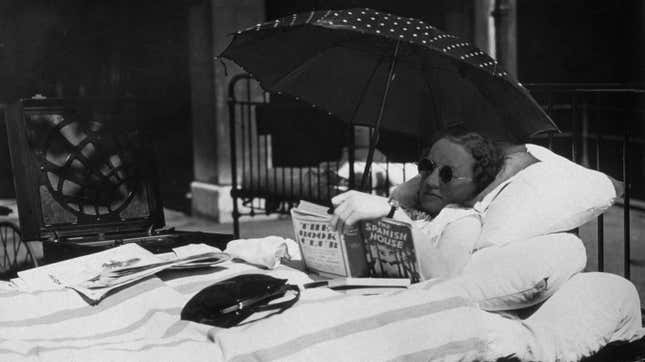Summer Reading Diary: Blood, Sweat, and Tears
In Depth

The concept of the summer beach read has always been a bit foreign to me. In South Florida, where I’ve lived most of my life, summer is the worst season—too hot, too humid, too rainy to even sit on the beach, let alone read a book.
The daily storms that happen with damp consistency are the only remarkable thing about summer here; between July and the end of August, it rains nearly every day, typically between 3:00 pm and 5:00 pm. It’s neither a light sprinkle nor the kind of rain that brings cooler weather; instead, the sun disappears behind rumbling black clouds and, for two hours, the sky flashes lightning and rain pours down, flooding drainage canals. After the storm, it’s still hot, and the early evening sun quickly returns, drying slick roads and reheating car interiors, guaranteeing that you will burn your thigh when you sit in it the next morning. The only evidence the daily storms leave is the rapid accumulation of mold on pool decks and windows and the (poisonous and invasive) toads enjoying a post-storm snack. Lauren Groff was right when she called Florida an “Eden of terrible things.”
Florida’s weather is probably why I associate summer reading with sticky ooze, viscous narratives, and a tinge of melancholy. I generally read a lot of medical histories, but during the summer, books about bodies and their fluids seem especially right. Last summer I read a bunch of books about pain, including Joanna Bourke’s excellent history, The Story of Pain. She contextualizes pain, not as a happening, but rather an event, “permeated through and through with the politics of power.”
-

-

-

-

-

-

-

-

-

-

-

-

-

-

-

-

-

-

-

-

-

-

-

-

-

-

-

-

-

-

-

-

-

-

-

-

-

-

-

-








































